Scientific mastery: François Morellet celebrates 90 years with London shows

In art, as in science, some of the most thoughtful, pioneering minds work away quietly in their studios or labs for decades before the world catches on to what they are doing. For nearly 30 years – from the late 1940s to the mid-70s – François Morellet, a self-trained painter, ran his family’s factory in Cholet, western France. Come the weekend, he was quietly inquiring into the nature of subjectivity in art – or as he describes it, 'flirting with the void'.
'When your goal is to say nothing, it is easy to do so, but the biggest challenge is to let people know about it,' says Morellet, as he prepares a series of exhibitions in London and Brazil to mark his 90th birthday. Now, at last, his early pieces of radical minimal and conceptual art are recognised by the establishment, and hang in major collections including the Tate Modern and MoMA; and his international reputation is growing.
He is wryly philosophical about his late success: 'I often said that in the past, I considered that my work was widely underestimated and that today it is probably overestimated. Injustice can be quite bearable, especially when it favours yourself.' This attitude, of standing back from his own success and observing it with a scientific, politicised coldness – yet always with a warm, humanising wit – is typical of the attitude Morellet has always taken to art.
In the early 50s, reacting against the values of the day, Morellet began to experiment with painting and printing methods that used systems to minimise the sensibility of the artist, and 'make work as empty as possible'. He explored an aesthetic dictated by both mathematical rhythms and chance, producing works like, Random Distribution of 40,000 Squares Using the Odd and Even Numbers of a Telephone Directory, 1960. Pre-dating the minimalist movement, he took as aesthetic inspiration his love of free forms like jazz and the apparently infinite motifs used in Oceanic tapa fabric designs.
Morellet later embraced neon tube lighting and installation art, always looking to reject art historical baggage with fresh forms, materials, and even language. When I asked Morellet if he created work in response to architectural spaces, he said he was allergic to the word 'create'. 'As far as I am concerned I amuse myself playing with constraints that I establish with my systems. Playing with "rules of the game" is the most efficient way to reduce my subjective decisions which is my first and final goal. Playing with architecture saves me the trouble of using my own constraints.'
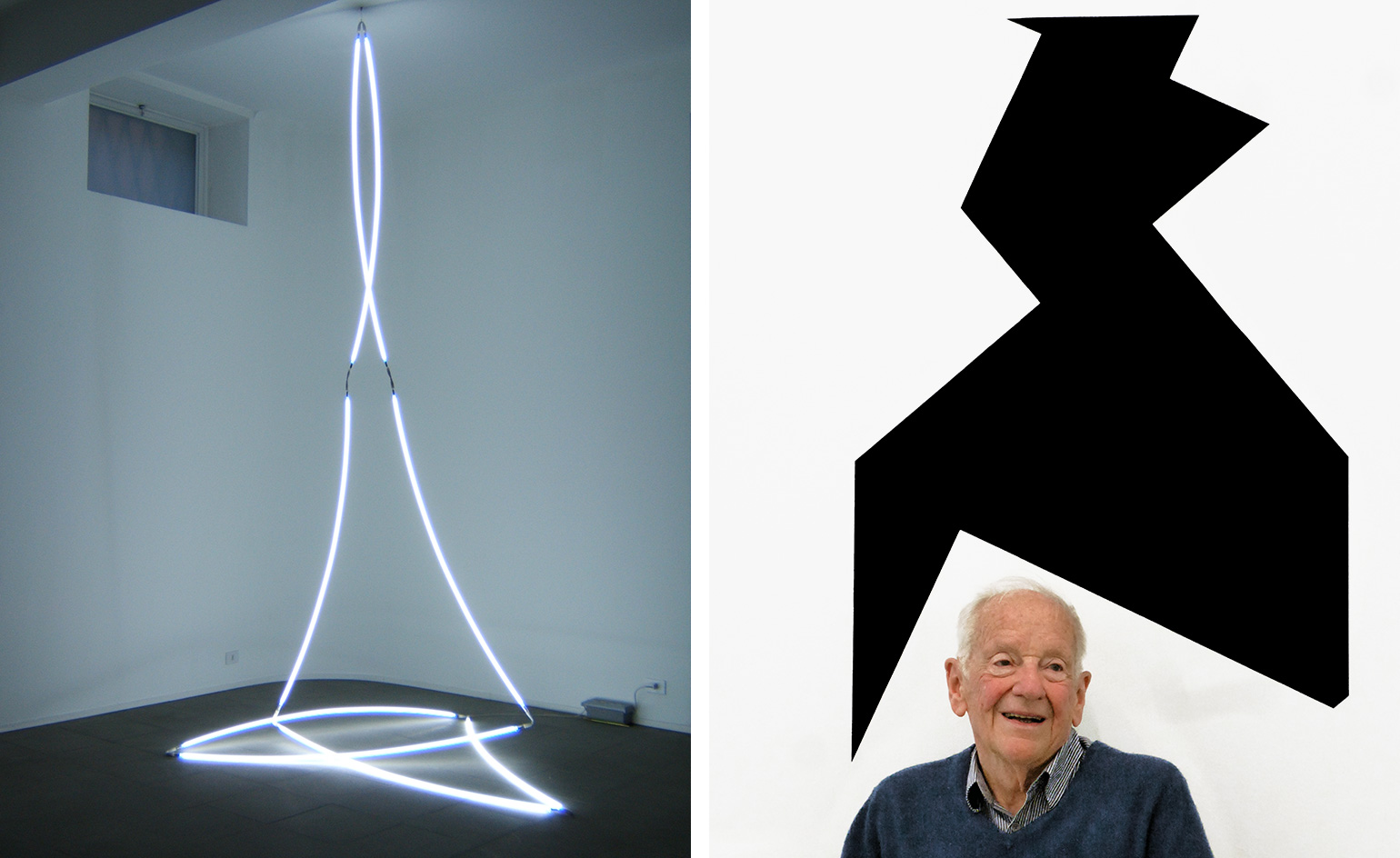
From the late 1940s to the mid-70s François Morellet ran his family’s factory in western France. Pictured left: Lamentable Ø 5m blanc, 2005. Right: François Morellet in his studio, Cholet.
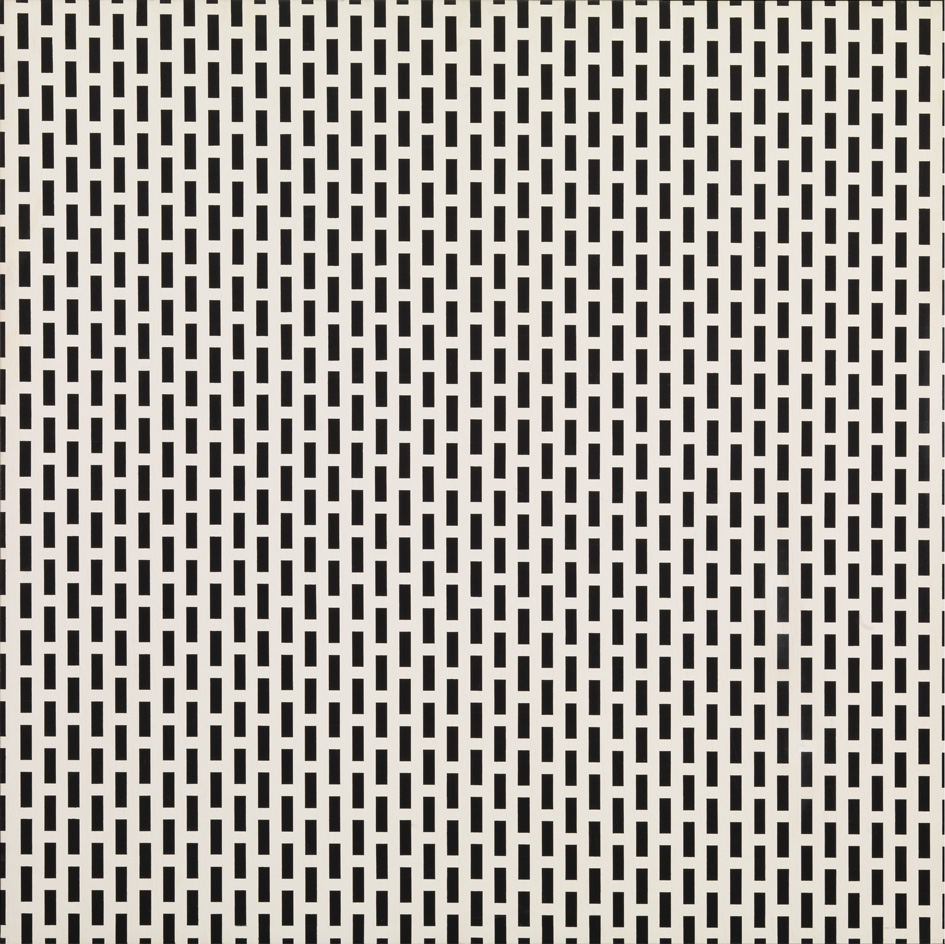
Now, at last, his early pieces of radical minimal and conceptual art are recognised by the establishment, and hang in major collections. Pictured: 3 trames de carrés 1 trame de tirets, 1975.
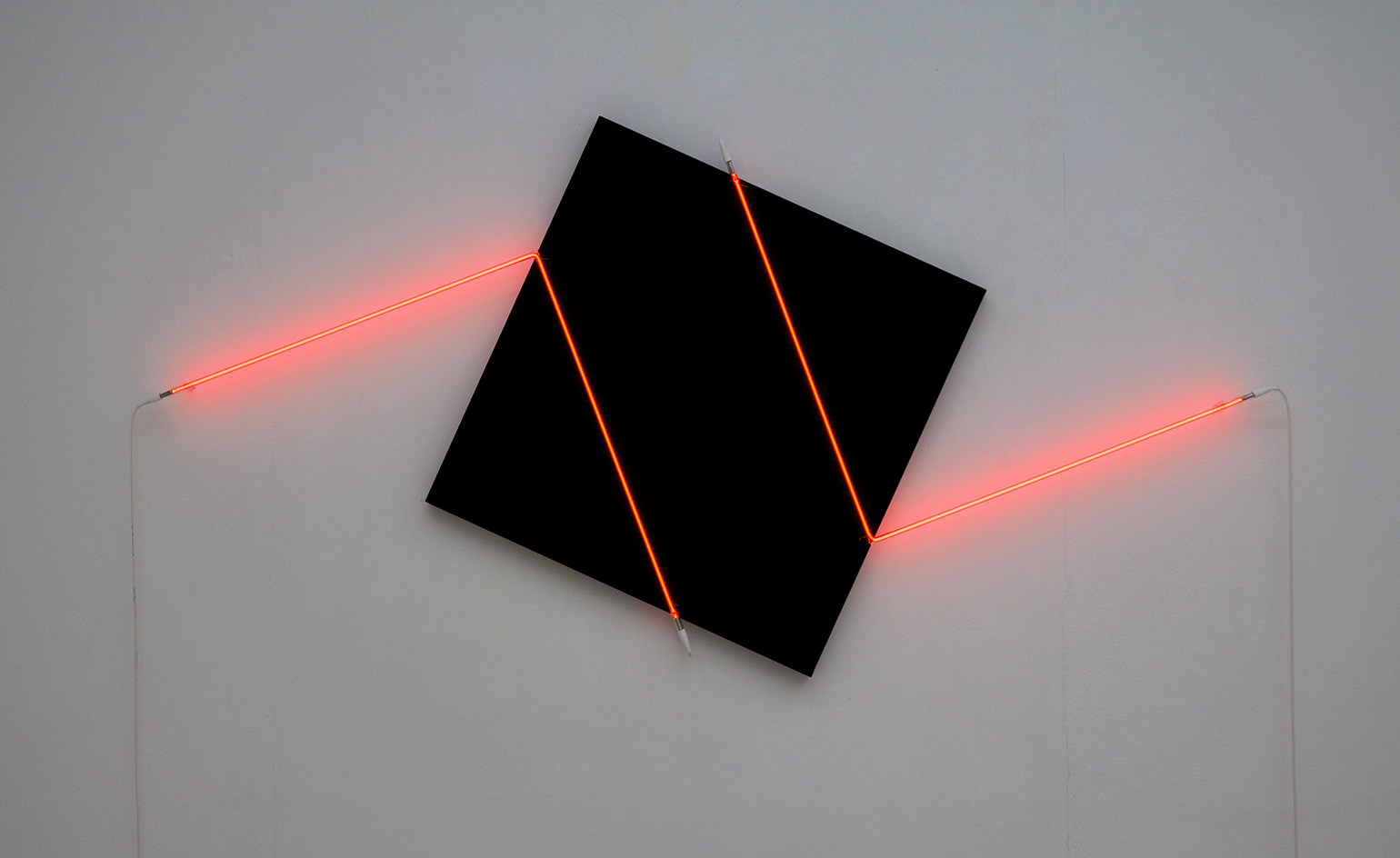
Morellet’s international reputation is conspicuously growing. Pictured: Contresens n°2, 2015.

Morellet explains, ’I often said that in the past, I considered that my work was widely underestimated and that today it is probably overestimated. Injustice can be quite bearable, especially when it favours yourself.’ Pictured: Carré bandé, 2015.
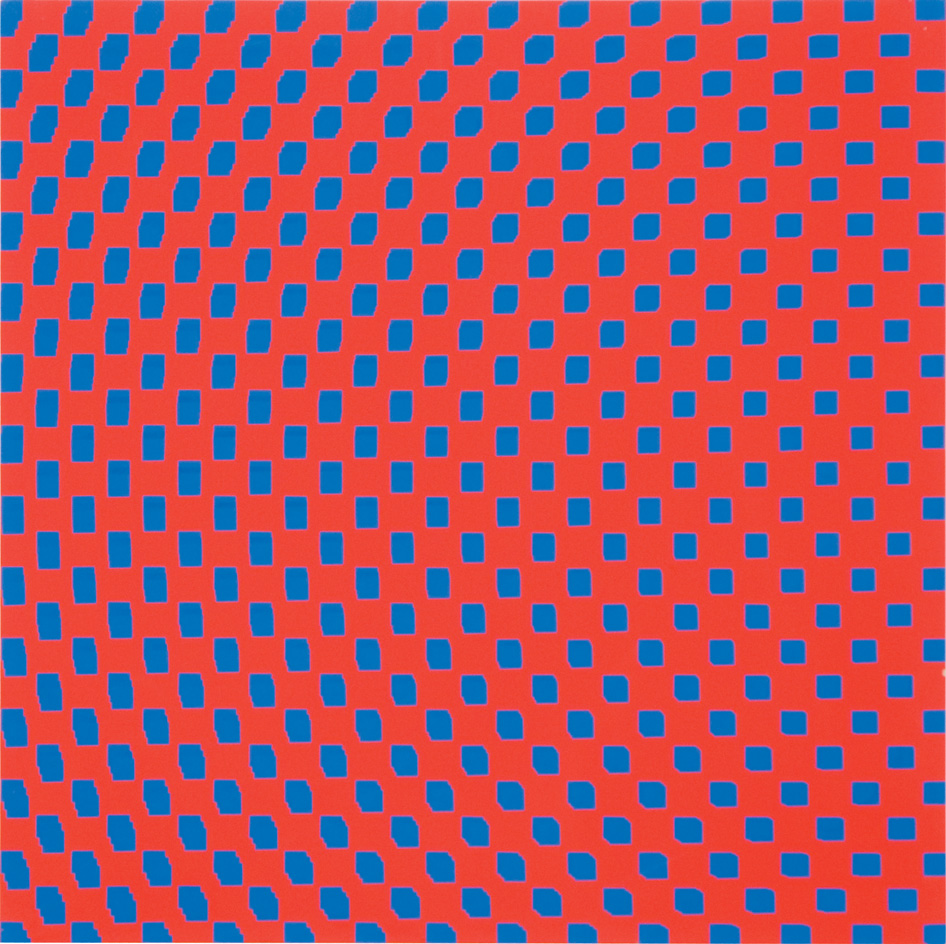
Standing back from his own success and observing it with a scientific coldness – yet always with a warm, humanising wit – is typical of Morellet’s attitude. Pictured: 3 Trames de carrés réguliers pivotés sur le côté, 1970.
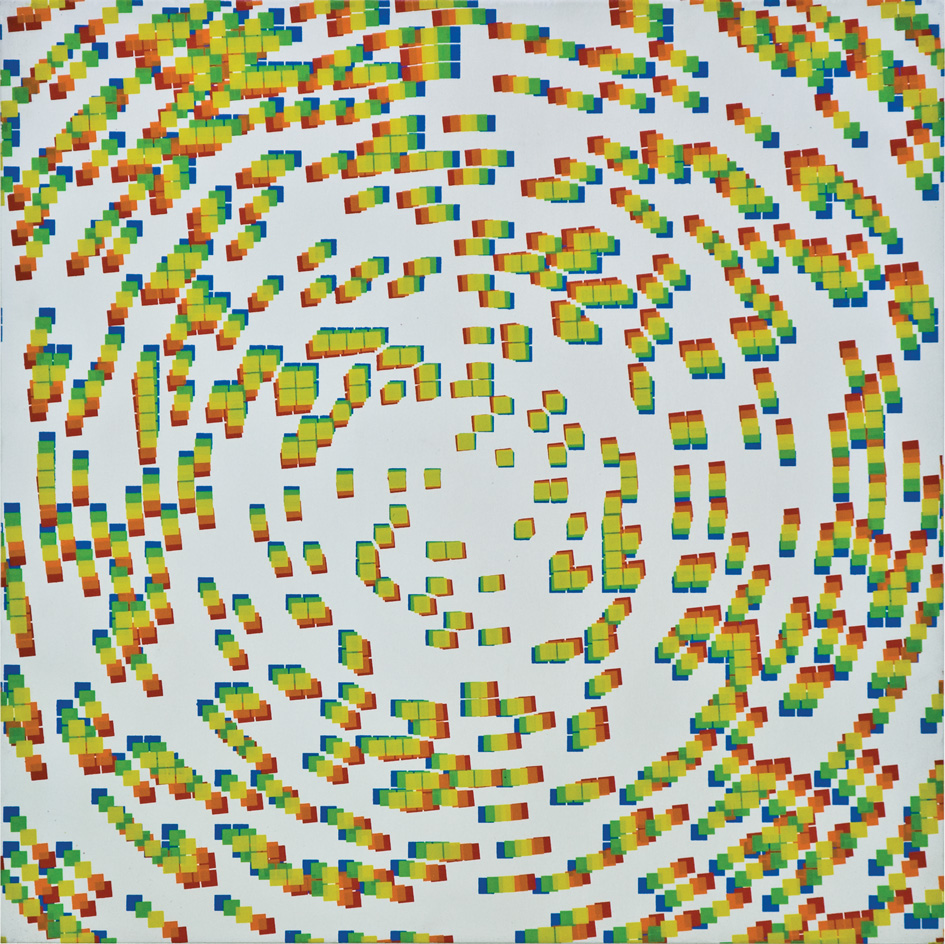
At the start of his career, Morellet began to experiment with painting and printing methods that used systems to minimise the sensibility of the artist, and ’make work as empty as possible’. Pictured: 5 Impressions Decalées Bleu, Vert, Jaune, Orange et Rouge, 1969.

Pre-dating the minimalist movement, he took as aesthetic inspiration his love of free forms like jazz and the apparently infinite motifs used in Oceanic tapa fabric designs. Pictured: 4 trames de tirets du bleu au vert pivotées sur un côté, 1971.
INFORMATION
’François Morellet’ is on view at Annely Juda Fine Art from 5 April – 24 June; and at The Mayor Gallery from 6 April – 27 May. For more information, visit The Mayor Gallery’s website
ADDRESS
Annely Juda Fine Art
23 Dering Street
London, W1S 1AW
The Mayor Gallery
21 Cork Street
London, W1S 3LZ
Receive our daily digest of inspiration, escapism and design stories from around the world direct to your inbox.
-
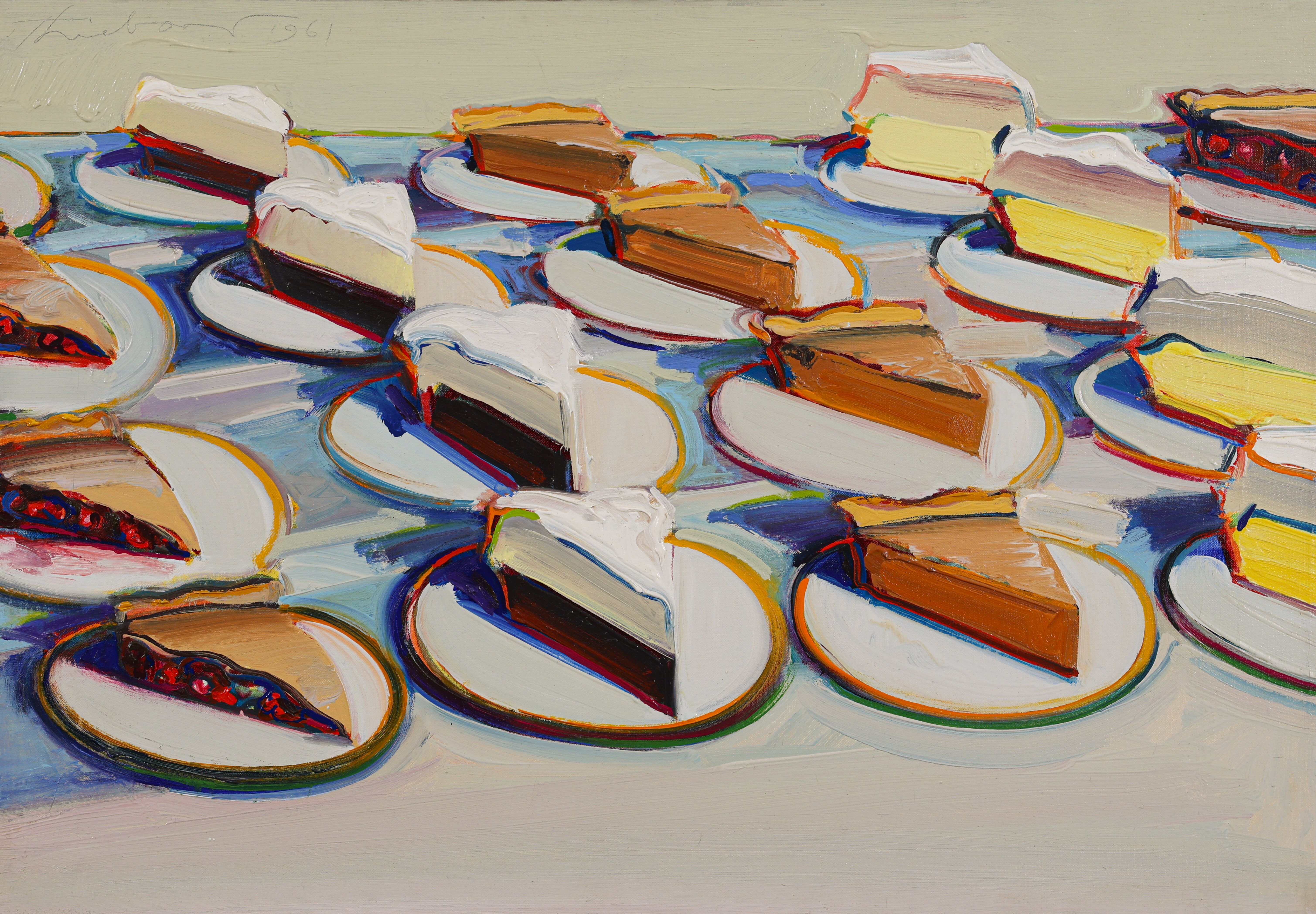 Why are Wayne Thiebaud’s paintings at the Courtauld so tempting?
Why are Wayne Thiebaud’s paintings at the Courtauld so tempting?The American artist’s thickly painted slices of cake at the Courtauld are some of our favourite artworks seen this year. What makes them so special?
-
 Taiwan’s new ‘museumbrary’ is a paradigm-shifting, cube-shaped cultural hub
Taiwan’s new ‘museumbrary’ is a paradigm-shifting, cube-shaped cultural hubPart museum, part library, the SANAA-designed Taichung Green Museumbrary contains a world of sweeping curves and flowing possibilities, immersed in a natural setting
-
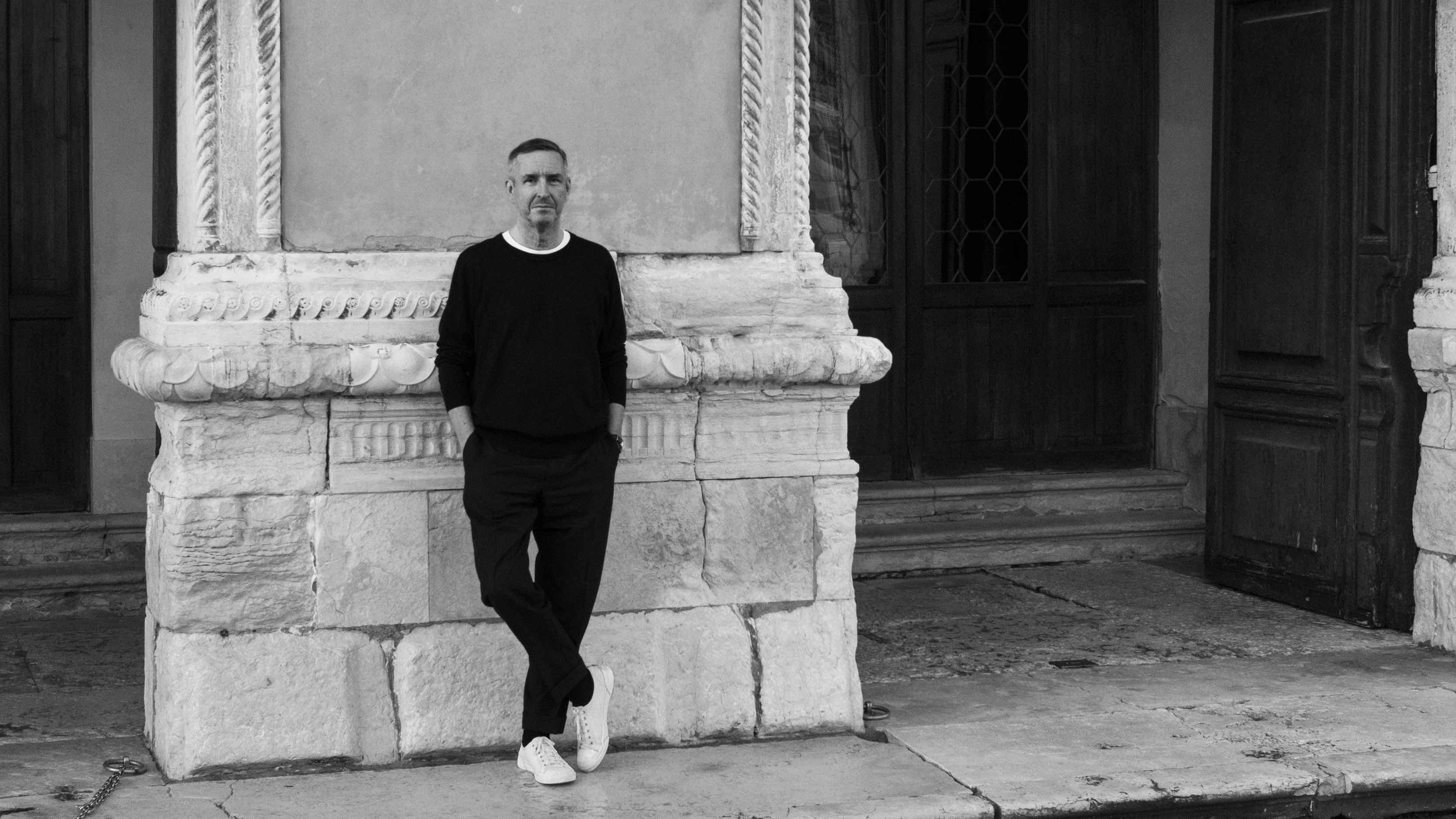 Dries van Noten on why he's building a new home for craft in Venice
Dries van Noten on why he's building a new home for craft in VeniceA year after departing the runway, Dries van Noten unveils his next chapter: the Fondazione Dries Van Noten, a newly announced cultural initiative in Venice celebrating craft in all its forms. Wallpaper* meets the designer to find out why he’s not ready to retire.
-
 Out of office: The Wallpaper* editors’ picks of the week
Out of office: The Wallpaper* editors’ picks of the weekIt’s wet, windy and wintry and, this week, the Wallpaper* team craved moments of escape. We found it in memories of the Mediterranean, flavours of Mexico, and immersions in the worlds of music and art
-
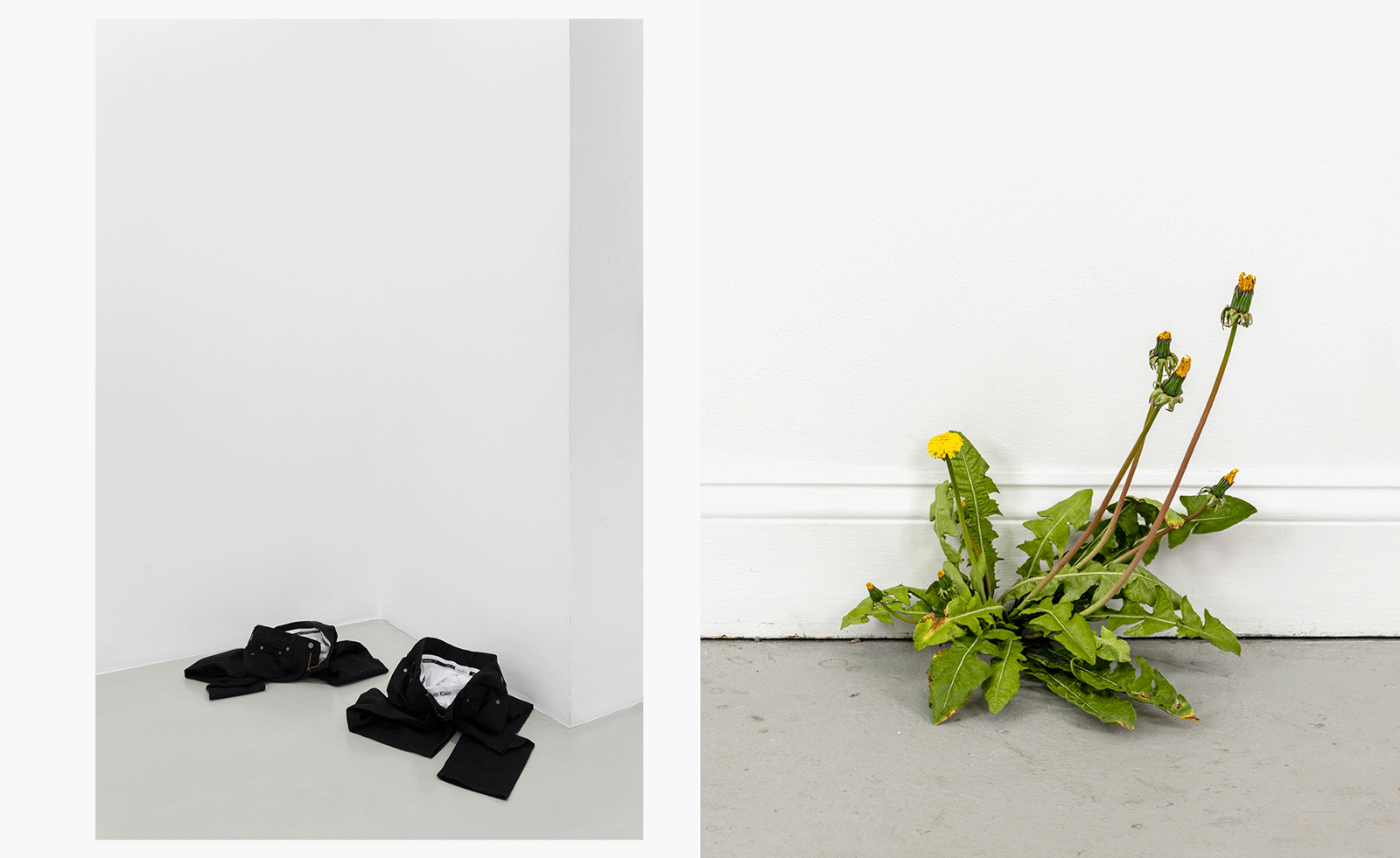 Each mundane object tells a story at Pace’s tribute to the everyday
Each mundane object tells a story at Pace’s tribute to the everydayIn a group exhibition, ‘Monument to the Unimportant’, artists give the seemingly insignificant – from discarded clothes to weeds in cracks – a longer look
-
 Out of office: The Wallpaper* editors’ picks of the week
Out of office: The Wallpaper* editors’ picks of the weekThis week, the Wallpaper* team had its finger on the pulse of architecture, interiors and fashion – while also scooping the latest on the Radiohead reunion and London’s buzziest pizza
-
 Out of office: The Wallpaper* editors’ picks of the week
Out of office: The Wallpaper* editors’ picks of the weekIt’s been a week of escapism: daydreams of Ghana sparked by lively local projects, glimpses of Tokyo on nostalgic film rolls, and a charming foray into the heart of Christmas as the festive season kicks off in earnest
-
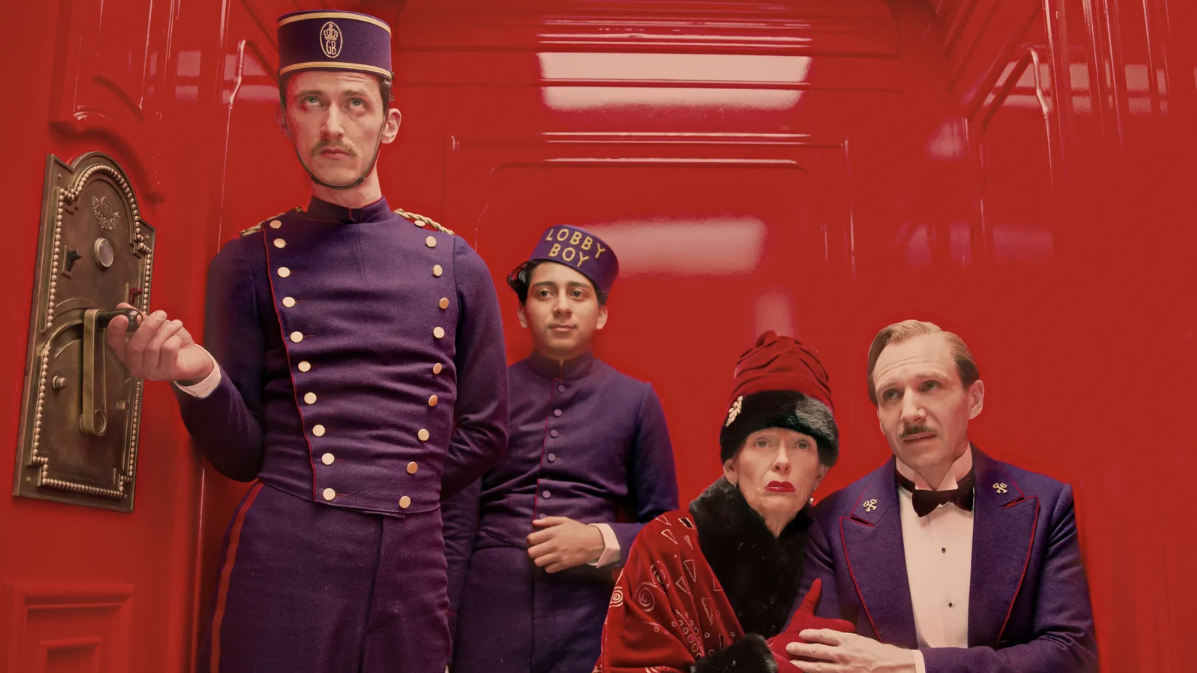 Wes Anderson at the Design Museum celebrates an obsessive attention to detail
Wes Anderson at the Design Museum celebrates an obsessive attention to detail‘Wes Anderson: The Archives’ pays tribute to the American film director’s career – expect props and puppets aplenty in this comprehensive London retrospective
-
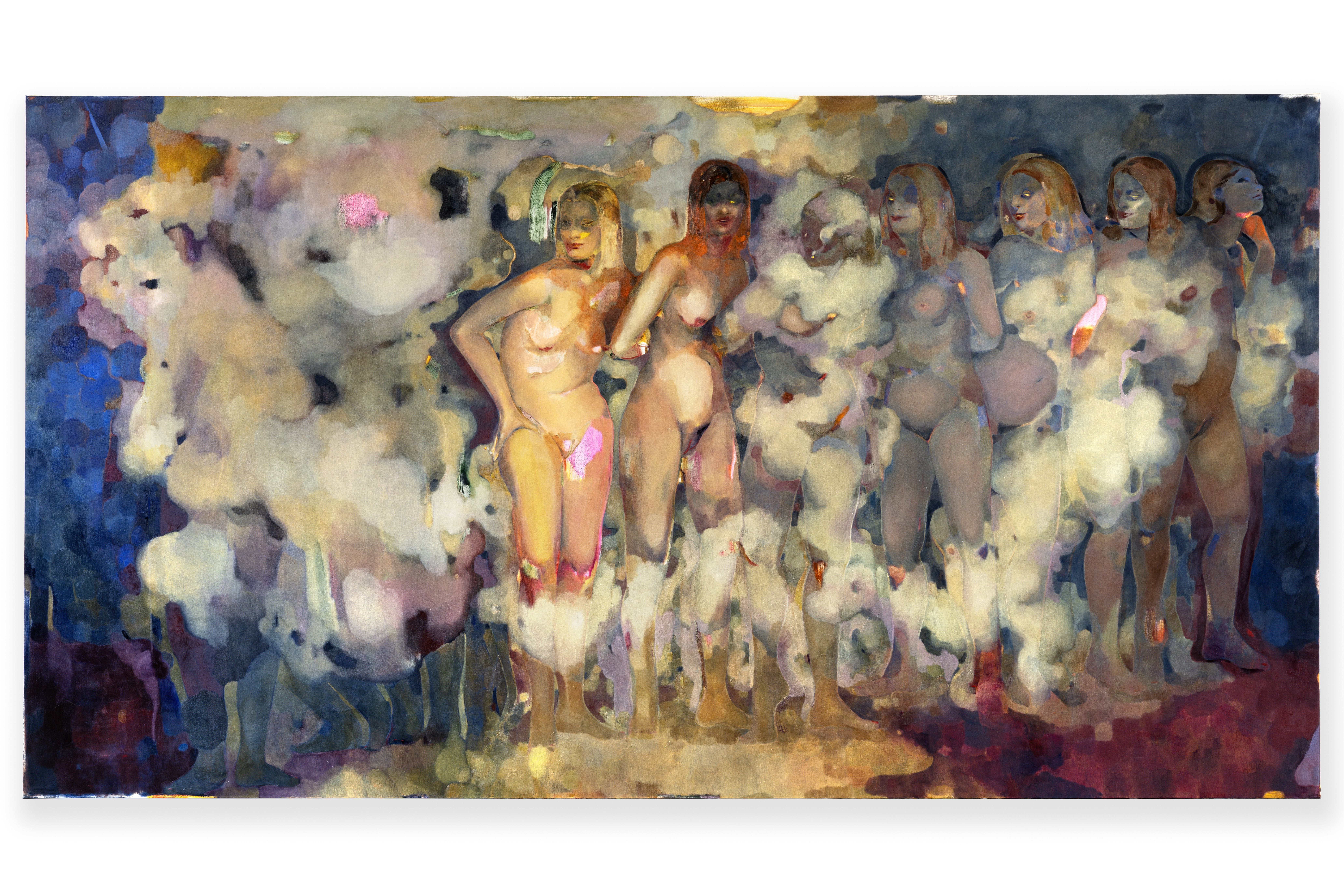 Meet Eva Helene Pade, the emerging artist redefining figurative painting
Meet Eva Helene Pade, the emerging artist redefining figurative paintingPade’s dreamlike figures in a crowd are currently on show at Thaddaeus Ropac London; she tells us about her need ‘to capture movements especially’
-
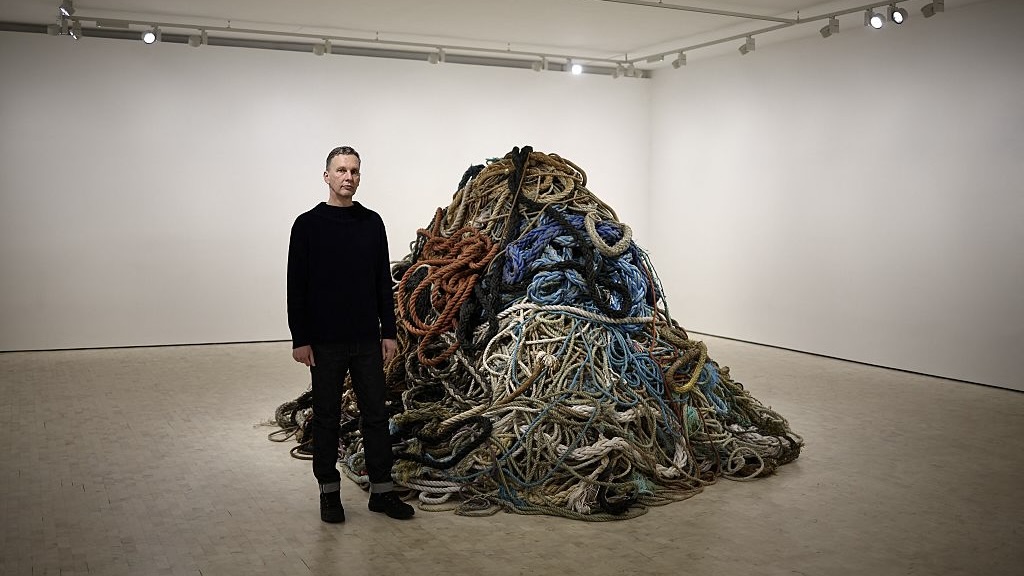 David Shrigley is quite literally asking for money for old rope (£1 million, to be precise)
David Shrigley is quite literally asking for money for old rope (£1 million, to be precise)The Turner Prize-nominated artist has filled a London gallery with ten tonnes of discarded rope, priced at £1 million, slyly questioning the arbitrariness of artistic value
-
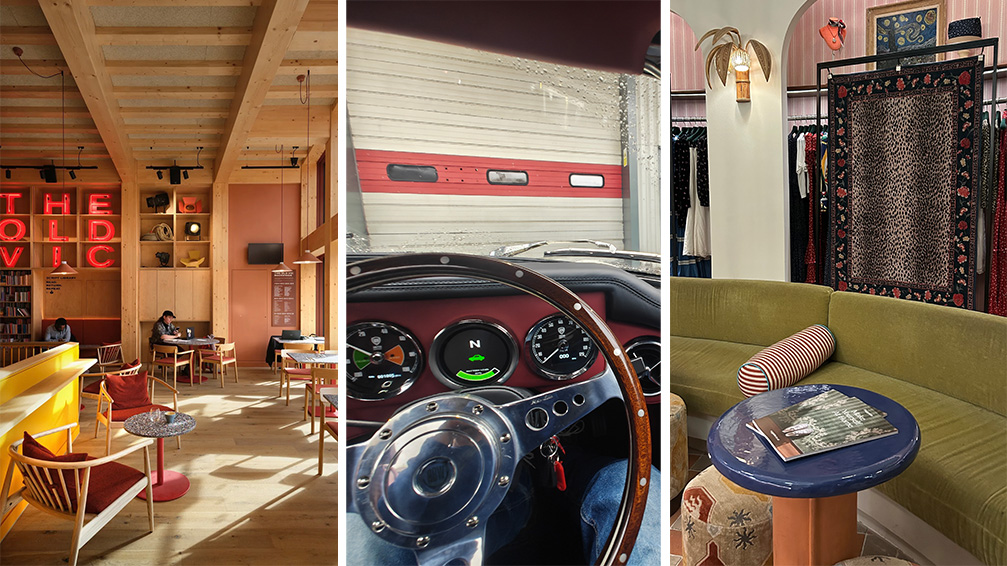 Out of office: The Wallpaper* editors’ picks of the week
Out of office: The Wallpaper* editors’ picks of the weekThe rain is falling, the nights are closing in, and it’s still a bit too early to get excited for Christmas, but this week, the Wallpaper* team brought warmth to the gloom with cosy interiors, good books, and a Hebridean dram